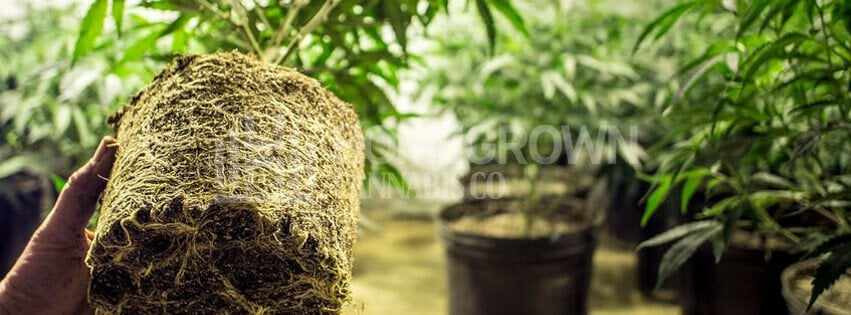Transplanting Marijuana Plants: Frequency and TimingUpdated 2 months ago
- Planting germinated seeds into first pot
- Moving seedlings to intermediate containers
- Final transplant into flowering pot
Note: Transplant timing depends on plant size and root ball development.
- Weak new growth
- Stunted flowering
- Reddening of the stem
- Nutrient sensitivity or deficiency
- Wilting and drooping leaves
- Stretching
- Soil drying out quickly
- Unusual leaf discoloration
- Slow water absorption
Regularly check roots by gently lifting the plant from its pot. Tangled or escaping roots indicate it's time to transplant.
- Transplant when the 4th or 5th set of leaves appears
- Check drainage holes for root condition:
- Healthy roots: white, not tangled
- Transplant needed: discolored, tangled, or growing out of container
- Move to final, largest pot during early vegetative stage
- Avoid transplanting during flowering
- If late for repotting, wait until next grow cycle
- Pot up to containers 2-3x the size of the previous one
- Allow minimum 2 gallons of soil per 12 inches of plant height
- Consider potential strain height when planning
| Plant Height | Recommended Pot Size |
|---|---|
| 0–6″ | 16 oz |
| 6–12″ | 1-gallon |
| 12–24″ | 3-gallon |
| 24–42″ | 5-gallon |
| 42–60″ | 10-gallon |
| 60–84″ | 20-gallon |
- Observe plants closely for transplant readiness
- Avoid predetermined transplant schedules
- Be cautious of transplant shock
- Most indoor strains finish well in 5-gallon containers
- Outdoor plants may need up to 20 gallons
Remember, successful transplanting is crucial for healthy plant development and optimal yields. Always prioritize observation and plant needs over rigid schedules.
